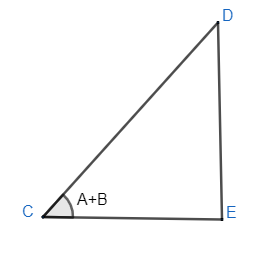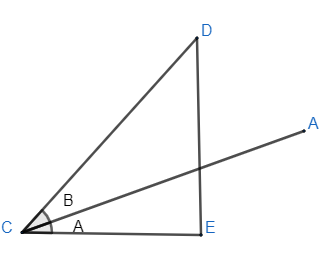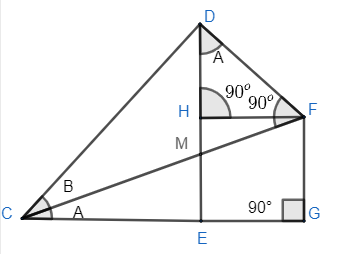Question
Question: \(\sin \left( A+B \right)=\sin A\cos B+\cos A\sin B\) . If true then write 1 and if false then write...
sin(A+B)=sinAcosB+cosAsinB . If true then write 1 and if false then write 0.
Solution
Hint: For proving the given relation, take a right angle triangle with one angle as A + B. split this angle to A and B by a line. Draw perpendicular by the vertex of the triangle to the line. Solve it further.
sinθ=HypotenusePerpendicular,cosθ=HypotenuseBase
Complete step-by-step answer:
Given in the question is
sin(A+B)=sinAcosB+cosAsinB....................(i)
Let us suppose a right angle with one angle of it as (A + B).

Let us split angle A + B into two angles i.e. A and B. Diagram can be given as

Now, draw a perpendicular to the line AC meeting at F and draw a perpendicular from point F to side ED. So we get diagram as

Where FG is perpendicular to line CE. Now, CE and HF are two lines that are perpendicular to the same line DE. It means CE and HF should be parallel to each because perpendicular to any line will have only one direction. So, HF∣∣CE.
Hence, ∠HFM=A because of corresponding angles formed by a transversal with two parallel lines. As we know, the sum of all angles of a triangle is 180∘.
So, in ΔFHM
∠HFM+∠FMH+∠MHF=180∘A+∠FMH+90=180∘∠FMH=90−A............................(i)
Now, in ΔDFM , we get
∠DFM+∠FMD+∠MDF=180∘
Using equation (i) we get
